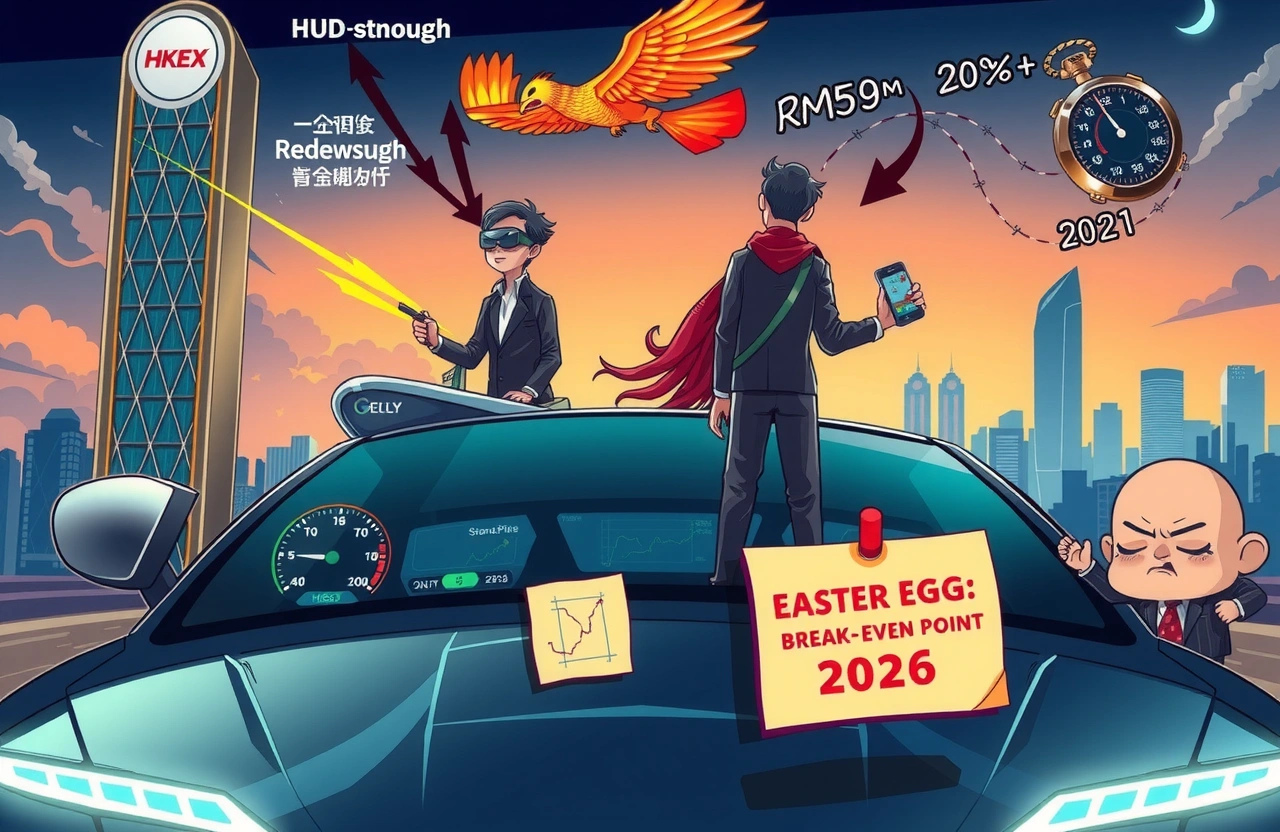The High-Stakes Bet on Automotive Innovation
Amid fierce price wars in China’s automotive sector, Jiangsu Zejing Automotive Electronics has filed for a Hong Kong IPO with Haite International and CITIC Securities as joint sponsors. This strategic move comes despite three consecutive years of net losses totaling RMB569 million. The company rocketed to prominence when Xiaomi CEO Lei Jun (雷军) revealed during the SU7 launch that “our AR-HUD comes from Zejing Electronics.” As China’s second-largest head-up display (HUD) supplier with 22 automaker clients including NIO, Geely, and Changan, Zejing Electronics’ Hong Kong IPO represents a critical inflection point. Its journey encapsulates the paradox of China’s auto tech sector: soaring valuations despite mounting financial pressures, where technological ambition collides with commercial realities.
Grassroots Origins to Industry Contender
Founded in 2015, Zejing Electronics specializes in windshield HUD (W-HUD) and augmented reality HUD (AR-HUD) systems that project critical driving information onto windshields. The company’s origin story centers on complementary brother founders who engineered its improbable rise.
The Zhang Brothers: Technical and Strategic Synergy
Technical visionary Zhang Bo (张波), former Microsoft China engineer, spearheaded optical projection and AR algorithm breakthroughs. His brother Zhang Tao (张涛), leveraging 18 years at SAIC-Volkswagen, drove business strategy. This partnership enabled Zejing’s landmark 2016 victory: securing NIO’s ES8 contract despite having no production line, mass-manufacturing experience, or industry reputation. Their winning bid undercut international competitors by 50% through radical cost innovation.
Improvisation to Industrialization
Facing tight deadlines, Zejing engineers built manual production lines that later evolved into automated facilities. By 2018, NIO ES8 deliveries established Zejing’s market credibility through reliability and value positioning. Within a decade, the company captured 16.5% domestic market share, trailing only established leader Huayang Group. Zejing Electronics’ Hong Kong IPO filing marks the culmination of this transformation from garage startup to tier-1 supplier.
Investor Frenzy Meets Financial Reality
Zejing Electronics’ shareholder registry reads like a who’s-who of Chinese automotive and tech capital, masking underlying financial vulnerabilities that complicate its Hong Kong IPO ambitions.
Blue-Chip Backers and Soaring Valuation
The company’s pre-IPO funding rounds attracted strategic investments from:
- Geely Holding Group
- Shunwei Capital (Xiaomi’s investment arm)
- FAW Group
- BAIC Group
This backing propelled Zejing’s valuation from RMB60 million in 2017 to RMB2.585 billion by 2024 – a 42x increase. Current collaborations span 90 vehicle models across 22 automakers, including Xiaomi’s SU7 that boosted brand visibility.
The Debt Trap Beneath the Surface
Financial statements reveal alarming trends that could jeopardize Zejing Electronics’ Hong Kong IPO:
- Total liabilities surged from RMB820 million (2022) to RMB1.674 billion (2024)
- Shareholders’ equity deficit worsened to -RMB897 million
- Debt-to-asset ratios exceeded 200% for three consecutive years
- RMB1.36 billion in redeemable preferred shares classified as liabilities under IFRS
This stems from “fake equity, real debt” financing structures where preferred shares contain mandatory redemption clauses if Zejing fails to list by December 2027. Early investors Shanghai Shangqi and Yangzhou Property Rights already exited completely between 2019-2024, cashing out over RMB100 million.
Market Expansion Amid Profitability Squeeze
While automotive HUD adoption grows at 30% CAGR, Zejing Electronics faces brutal industry headwinds that threaten its Hong Kong IPO narrative. Chairman Zhang Tao (张涛) targets RMB1 billion sales by 2026, but current metrics suggest challenging hurdles.
The Growth Deceleration Problem
Revenue growth collapsed from 156.6% in 2023 to just 5.1% in 2024, with total sales reaching RMB578 million. Despite shipping 62,460 HUD units last year (up from 17,570 in 2022), average selling prices plummeted 11.2% to RMB865 per unit. Zhang Tao acknowledged the brutal economics: “Over 8-9 years, same-specification HUDs now sell for just 10-15% of historical prices.”
Downward Pricing Pressure Intensifies
Zejing’s prospectus explicitly warns that automakers’ cost-cutting demands could “materially adversely affect” profitability. As Chinese EV manufacturers consolidate, pricing pressure may exceed expectations. The company’s survival hinges on developing higher-margin AR-HUD systems while containing costs – a difficult balance when R&D expenditure consumed 21.3% of revenue in 2024. Without premium product breakthroughs, Zejing Electronics’ Hong Kong IPO could become a stopgap rather than a solution.
Survival Strategies in the HUD Arena
Zejing Electronics’ path to sustainable growth requires navigating three critical challenges that will determine whether its Hong Kong IPO succeeds beyond the initial listing.
Technology Differentiation Imperative
With AR-HUD adoption projected to grow at 38% CAGR through 2030, Zejing must out-innovate competitors like Continental AG and Denso. Its 76 patents (54 invention patents) provide foundation, but requires continuous advancement. The Xiaomi SU7 partnership demonstrates capability, yet industry-wide standardization threatens to erase technical advantages.
Capital Structure Overhaul
Successful Zejing Electronics’ Hong Kong IPO must eliminate the redeemable shares overhang. Prospectus analysis shows that listing would convert RMB1.36 billion in liabilities to equity, potentially reversing the shareholders’ deficit. Delayed listing triggers reactivation of redemption clauses that could bankrupt the company.
Automaker Consolidation Risks
As Chinese EV makers face shakeouts, Zejing’s concentrated client base creates vulnerability. Its top five customers contributed 75.8% of 2024 revenue. Supplier diversification and international expansion become essential shock absorbers against domestic market volatility.
Make-or-Break Moment for Auto Tech Visionaries
Zejing Electronics’ Hong Kong IPO represents more than a financial lifeline – it’s a referendum on whether capital-intensive automotive innovation can thrive in China’s cutthroat supplier ecosystem. The company’s trajectory reveals broader industry truths: technological leadership alone cannot overcome structural financial challenges, and investor enthusiasm often outpaces commercial reality. For Zejing, 2027 isn’t merely a deadline but an expiration date. Success requires simultaneously achieving production scale, containing price erosion, and delivering next-generation AR-HUD systems that justify premium pricing. Investors should scrutinize the post-IPO roadmap for concrete profitability milestones rather than sales volume alone. The company’s fate will signal whether China’s auto tech suppliers can transition from loss-leading disruptors to sustainable innovators. Track Zejing’s listing progress on the Hong Kong Stock Exchange for critical updates on this bellwether offering.



